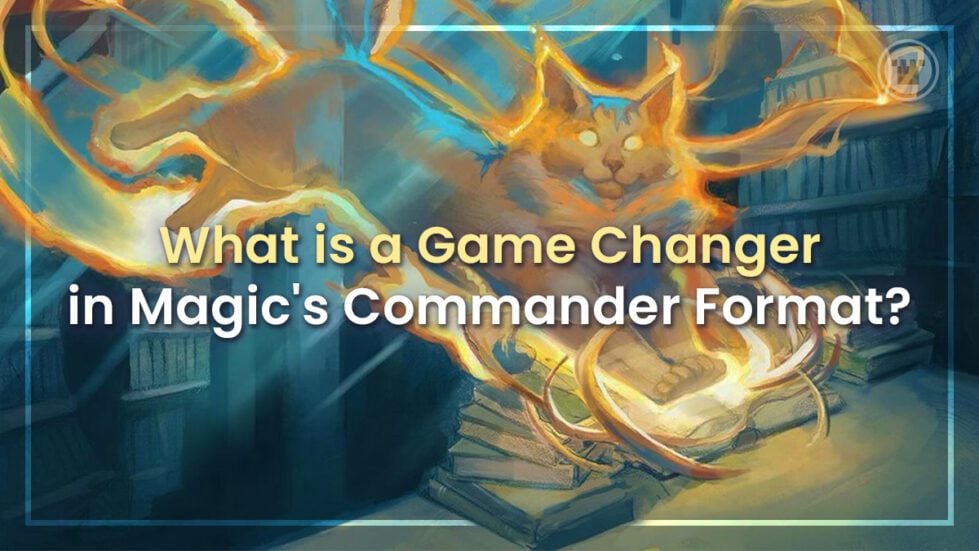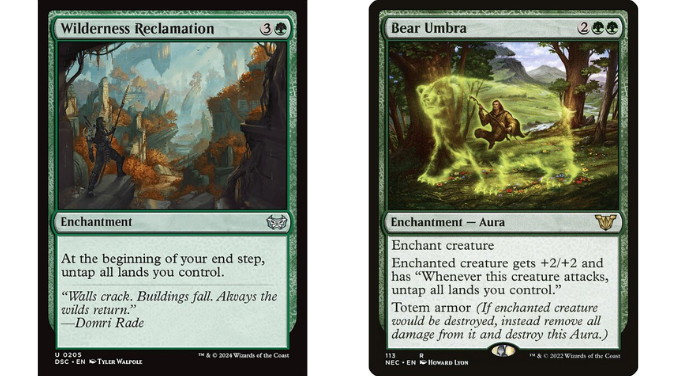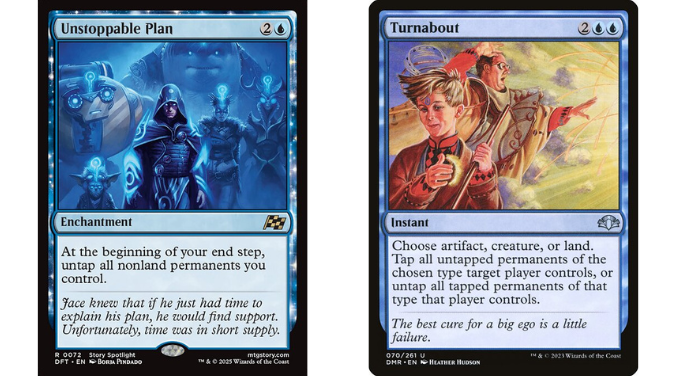If you’ve been playing Commander you might have heard of the term Game Changer. But what is a Game Changer exactly? And why those cards specifically? Let’s explore the concept and some examples.
THE COMMANDER BANLIST
Commander is the most popular multiplayer variant of Magic: the Gathering. Like all formats, it has a banlist. That list contains a number of cards which are not legal to play. Like in 1v1 formats, those cards can be (and often are) cards deemed simply too powerful to exist in the format.
That list also contains a number of other cards banned for reasons like being ante cards, dexterity cards, or cards deemed offensive. You can read our breakdown of the banlist and the reasoning behind which cards are banned in our article, “What’s Banned in Commander, and Why?”.
While these cards being illegal for play in Commander is fairly straightforward, Commander also has another framework underpinning which cards are allowed to be played. Because players love to play at different power levels, there are certain cards which can really disrupt games at a more relaxed level of play.
This framework is called the Commander Brackets system.
COMMANDER BRACKETS BETA
Currently in Beta, the Commander Brackets System is a way for players to self-sort into the right kinds of play experience. Intent is a big part of pre-game chats in order to get the right sort of experience.
The Brackets system seeks to enable players who want to play at a more relaxed and chilled pace by making sure they aren’t “jump-scared” by the more powerful – and sometimes negatively impactful – cards legal in the format.
Aside from gating Mass Land Denial and chaining extra turn spells to Optimized (Bracket 4) and above decks, they also limit access to “Game Changers”, with only three allowed in the Upgraded (Bracket 3) tier, and zero allowed below in Core and Exhibition.
But what is a Gamechanger card?
WHAT IS A GAME CHANGER IN COMMANDER?
To put it simply, a Game Changer is a card that, well, changes the game. These are cards that, when put into play, have a way of focusing the game around them. They are often leagues above the next effect available that does something similar.
These cards are limited in quantity the more socially focused your deckbuilding is, because they disrupt the natural ebb and flow, and escalation curve, of casual Commander games.
Let’s look at some comparisons to see what makes a Game Changer so good.
If you’re trying to draw cards in Blue, you might look at playing Ledger Shredder. It requires people to play their second spell in a turn. One spell – or spells beyond the second one a player casts – won’t allow you to draw a card. Additionally, you aren’t drawing a card – you’re looting. Looting is where you draw a card, then must discard a card. You’ll never end up with more cards in hand. It’s just card selection, not card draw.
If you want card draw, a good option is Enduring Curiosity. It helps you draw multiple cards, but it requires you to have unblocked attackers (and give up the chance to block) to draw those cards.
Now that we’ve seen how much it costs for repeatable draw – and the drawbacks to playing it – let’s look at a popular Game Changer card.
Rhystic Study is a Game Changer. It’s significantly more powerful than the two other options we just looked at. It doesn’t require you to make an effort to draw extra cards. It keeps triggering beyond the first spell cast each turn, and you don’t have to discard cards. It’s harder to interact with as well, being an Enchantment.
This card is so much more powerful than other options for draw in Blue, and also has the game revolve around it. It can give people a “free” win, and requires very little investment.
Let’s look at one more example.
Seedborn Muse is a Game Changer. It should be immediately obvious what makes this card so powerful – it lets you take a whole extra turn in your opponent’s turns, provided you have some cards to play. It’s one half of the powerful effect on Prophet of Kruphix, a card on the Commander Ban List.
This effect has a big impact on games, often taking up a lot of time equity. It also gives you four times the amount of mana than anyone else, which can help you close out a game much sooner.
What are the next best options?
Well, you can untap all lands you control once, on your end step, with Wilderness Reclamation. Bear Umbra requires you to attack with an Enchanted creature to untap lands.
Blue can also untap all of your nonland permanents on your end step, but not your lands. Turnabout is an instant that requires some ingenuity to get extra mana out of.
The closest option is probably Quest for Renewal, which requires you to jump through a few hoops to activate it. Once completed, it untaps your creatures on each other player’s untap step.
As you can see, Seedborn Muse not only does more than these other cards, but contributes to an environment where resources are very unbalanced.
WHAT CARDS ARE GAME CHANGERS, AND WHY?
There are – at time of writing – 61 cards on the list of Game Changers. These cards are selected because, like the cards we went over above, they are game-warping effects that really only belong at the higher levels of play and at tables where people want to compete not just when playing, but also with their deckbuilding.
Cards on the Game Changer list are generally on there because they do one or more of the following:
- Create a huge resource imbalance
- Slow the game to a crawl
- Have limited counterplay
- Cheat on mana to a degree that is hard to compete with at a casual level of play
- Remove the natural variance of a 100-card singleton format with efficient tutors that can assemble win conditions with ease
- Shut off cards, strategies, or elements of gameplay in a way that can be unfun
For the full list of cards and reasons why the Commander Format Panel added them as a Game Changer, check out this article.
END STEP
Game Changer cards are fun to play with, but can be very impactful at more relaxed levels of play. We hope this article has given you a solid footing to understand what makes Game Changer cards so game-warping. With that information, you can also figure out better what cards you might want to play – or omit – from your decks.

Kristen is Card Kingdom’s Head Writer and a member of the Commander Format Panel. Formerly a competitive Pokémon TCG grinder, she has been playing Magic since Shadows Over Innistrad, which in her opinion, was a great set to start with. When she’s not taking names with Equipment and Aggro strategies in Commander, she loves to play any form of Limited.




